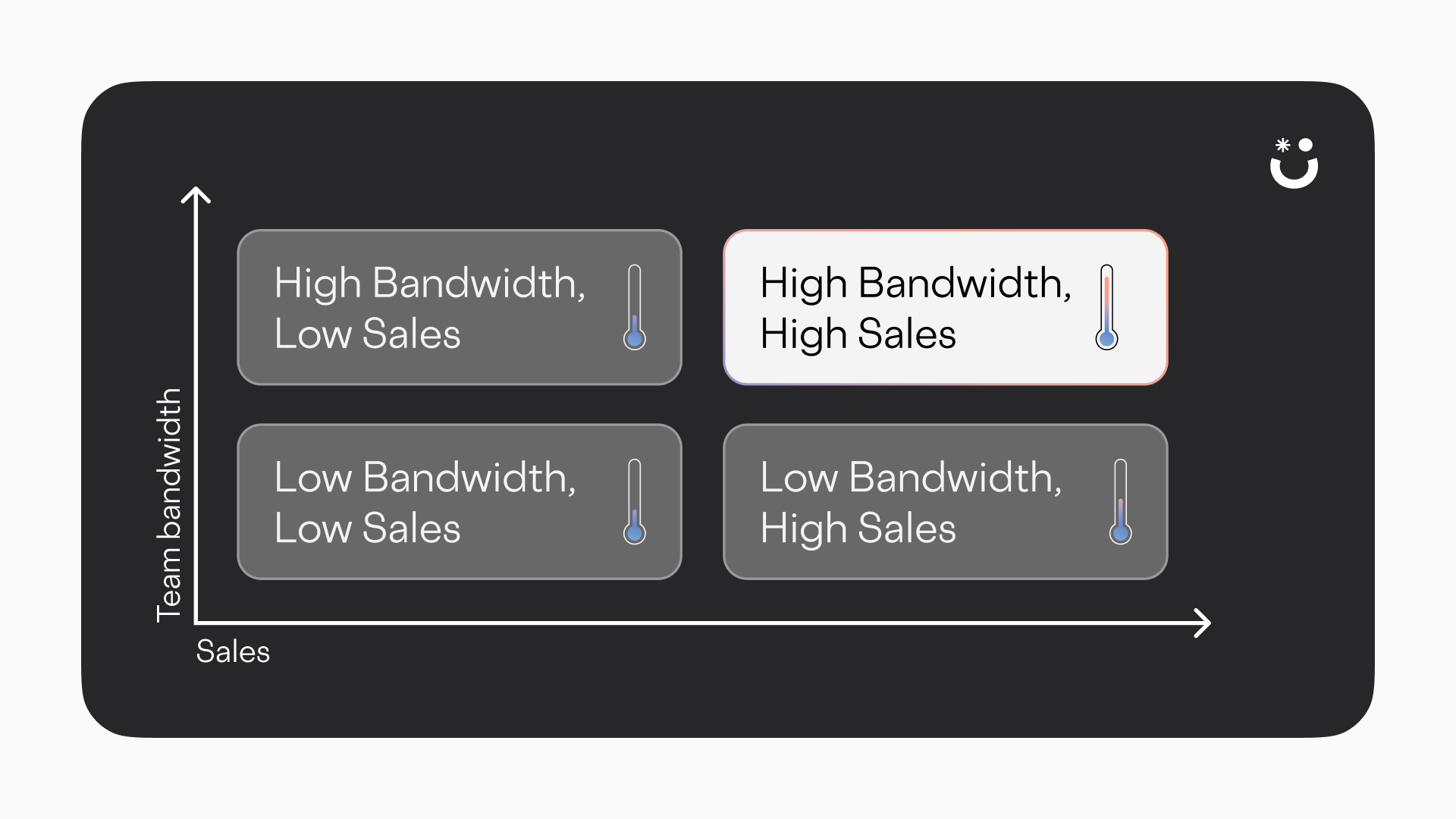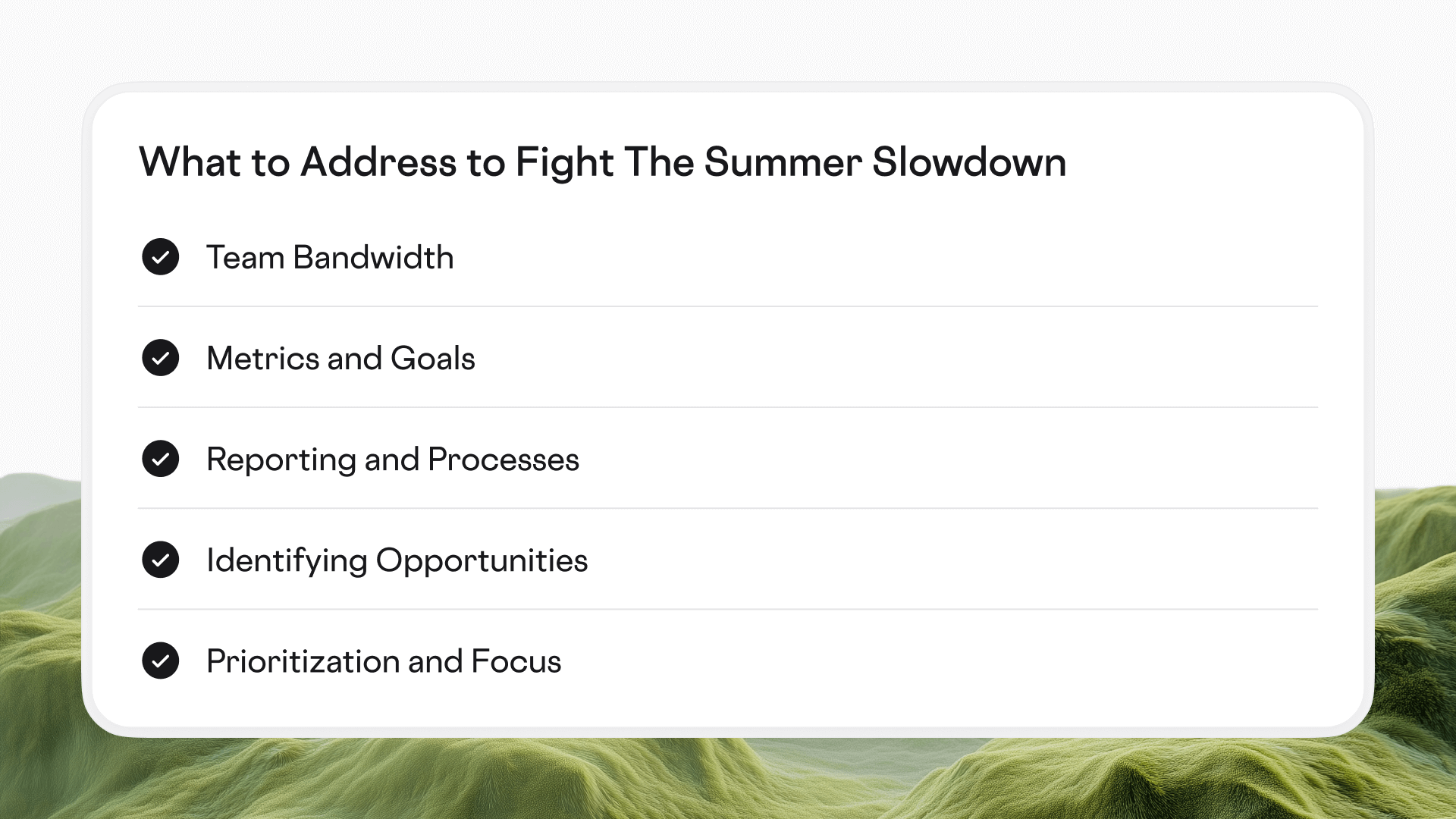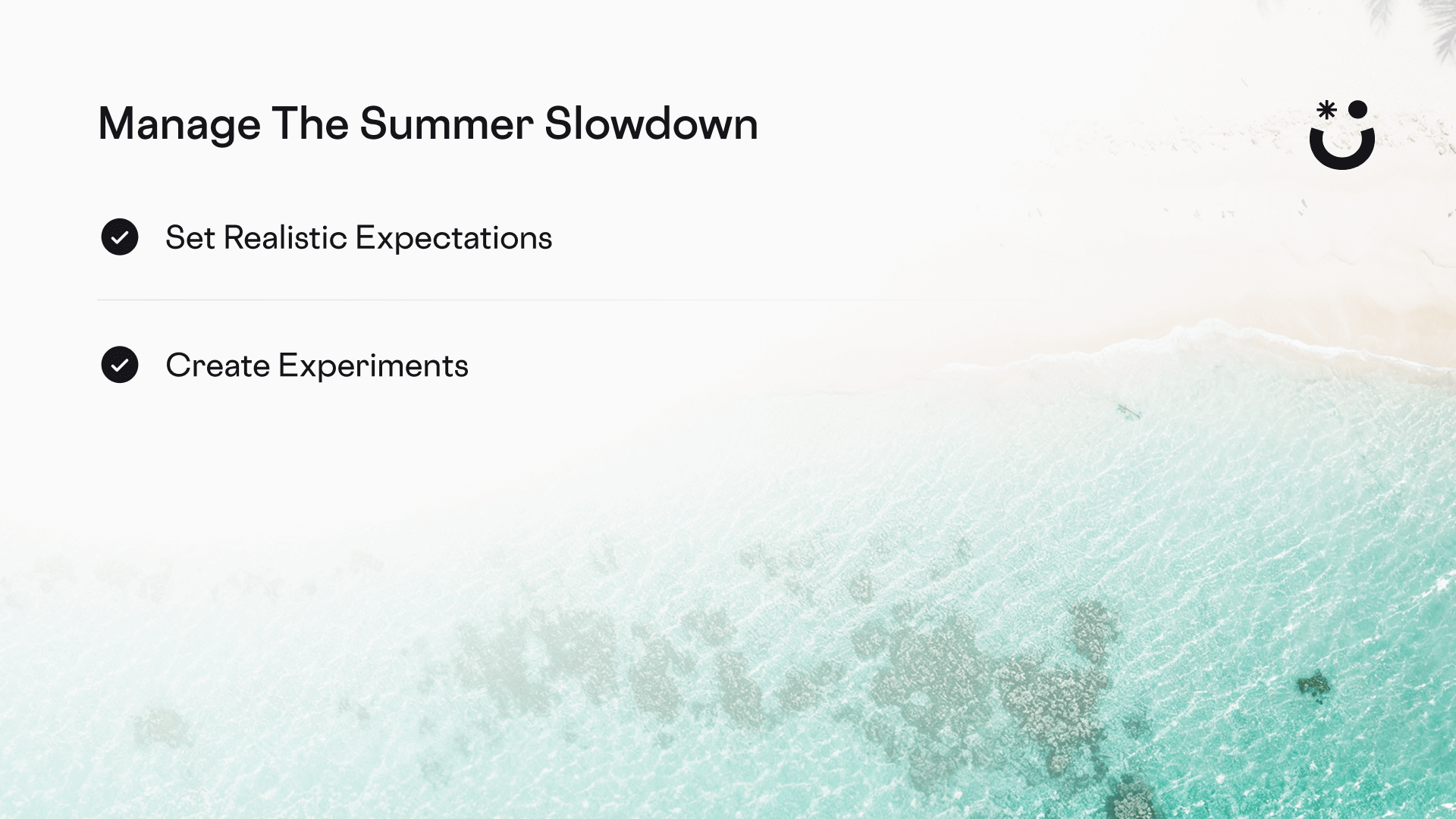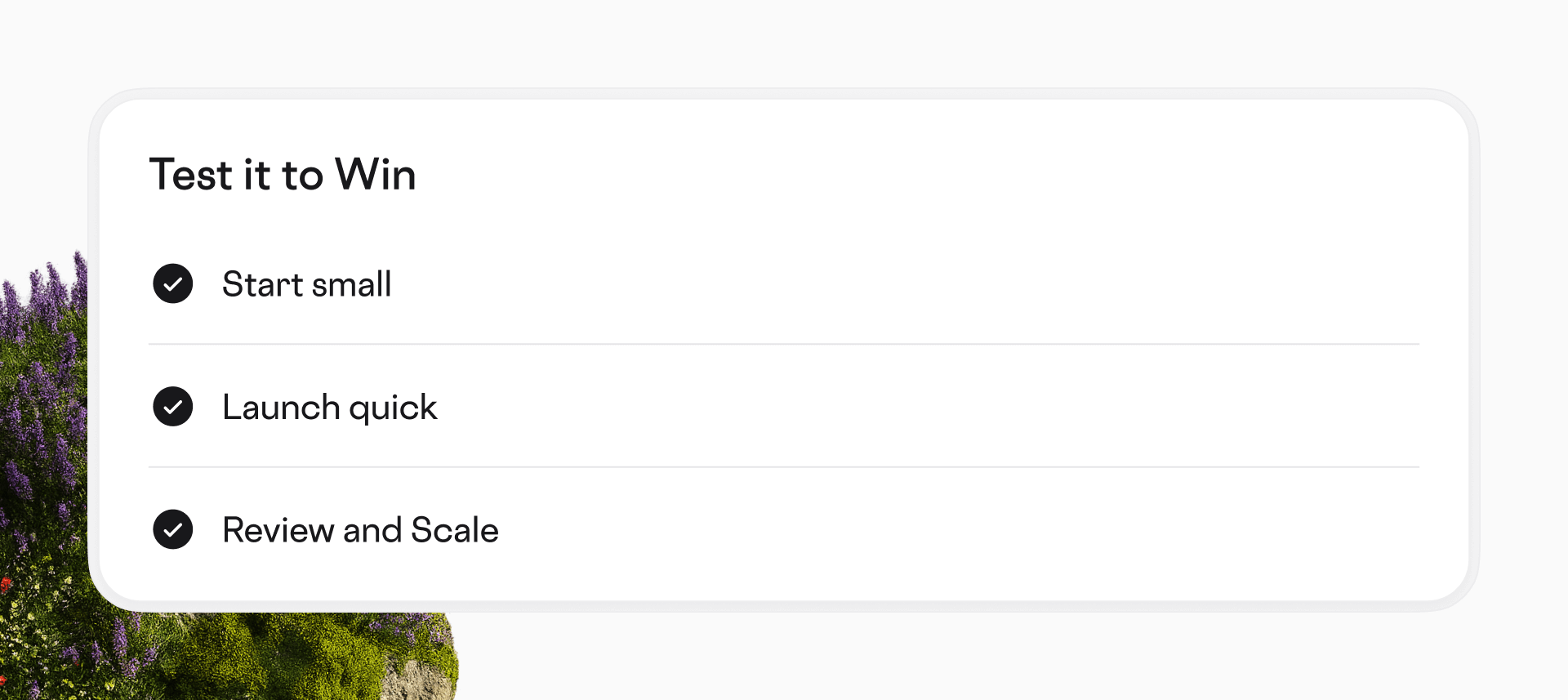Navigate The Summer Slowdown in 2025: Guide for B2B Companies


Navigating the Summer Slowdown for B2B Companies: Staying on Top of Metrics, KPIs, and OKRs
Over 2/3 of B2B businesses in the U.S. report a slowdown in business activity during the summer, according to Entrepreneur magazine. This is generally attributed to seasonality, which involves employees taking simultaneous mini-vacations and national holidays, such as the 4th of July, which presents a unique opportunity for people to take a well-deserved rest and go on trips.
Of course, not all companies experience this summertime sadness. Tourism and travel companies, for instance, are currently raking in their highest gross of the year.
But for B2B companies, these summer months often bring a natural dip in activity. They must ensure, though, that this "slowdown" doesn't mean a halt in progress.
It's crucial to maintain momentum and ensure that your key performance indicators (KPIs), objectives, and key results (OKRs), and other vital metrics remain on track so you can have an excellent Q3 and Q4.
This post will guide you through strategies to effectively manage and monitor your data during the summer period, keeping you ready to accelerate when the pace picks up.
The Summer Impact: A Cold Wave for Sales
While strategies to stop the slowdown are important, understanding where you are on the coldness scale is essential. So, let’s quickly review a few factors that can help illustrate the severity of your slowdown.
Last year, ProfitWells reported that the summer slowdown was the lowest since 2019, with only a 19% dip. During this summer, you may experience similar results.

Reduced customer activity, employee vacations, and seasonal shifts in demand can all influence your data. Here are the questions you should ask yourself before we proceed to developing strategies to maintain your metrics and KPIs.
- Customer behavior: Are your customers less active online? Do sales patterns shift?
- Team capacity: With team members on vacation, is there a temporary reduction in output or support?
- Market trends: Are there specific seasonal trends that impact your industry?
Answer all of these honestly, and by understanding the answers, you can adjust your monitoring approaches and expectations accordingly.
5 Strategies for Staying on Top
If you want to stay on top of your metrics, KPIs, and OKRs during the summer, you’ll need a proactive and adaptable approach. The first thing to consider is how your company's growth rate differs from that of the competition and the broader market.
To help you with that, Awesomic created a list of the 5 most common issues that the summer slowdown will bring up and how they affect your KPIs and OKRs.

1. Managing Team Bandwidth (Effectiveness)
The first blocker you’ll face during the summer is your team’s bandwidth, which will impact your output and how much you can do. According to a University of Chicago research in manufacturing, for every 1 °C above 27 °C, you can expect a slowdown in output of about 4%. Also, you may expect some more leaves during the hottest days.
Identifying the problem
A quick way to identify whether the summer slowdown is affecting your team is to track goals related to volume, such as outreach volume, time spent on tasks, and others, so you can compare them on a month-to-month basis.
You can then compare it to teams where leads are out of the office, 31% of people report they find it harder to get work done when coworkers are absent or less available, and they feel productivity slips away. This is especially true for companies in the creative and professional services sectors, as well as the tech industry.
Solutions to team bandwidth during the Summer
While logic would dictate that removing or reducing leaves during the summer would be the best solution, research actually shows that not having enough time to recharge will come back to bite you during the busiest seasons in Q3 and Q4. So, what can you do to handle the summer slowdown on your end?
- Alternatives to traditional hiring: The Summer is the prime time to connect with great talent that can support your workers with freelancing or temporary contracts. They can aid with experimentation or the busywork we mentioned above. But the main hack here is to leverage a worldwide talent pool since you can find people working through different seasons than summer.
- Work with team leads on leaves: Collaborate with your team leads to establish a leave calendar at least one month before summer holidays. This ensures that team leads are not all absent at the same time, making multidisciplinary projects less likely to stall. Also, ensure your team is comprised of people of multiple generations, as their vacation habits differ.
- Different work schedules: One common tactic for hybrid working environments is to have Fridays become half days, either every week or every other week, to allow your team to recharge without taking extended leaves.
- Hire now: Yes, savvy recruiters look for the best talent during the slowdown, when they are on leave or currently unemployed. This streamlines recruitment processes, and you may find a new talent who’s completely fresh to help you grow past the slowdown.
Putting these together should help maintain your team bandwidth KPIs on track.
Want a better alternative to freelancing and traditional hiring? Try out Awesomic today.
2. Review and Adjust Your Targets (Efficacy)
The summer slowdown can be the best time to revisit your goals and targets. While you shouldn't abandon your long-term goals, it might be beneficial to adjust short-term expectations for the summer months.

he reality is that during summer, you’ll have fewer people around for longer periods of time. It’s the perfect time to review your goals and regroup. What are the main goals you set at the start of the year that you’re not even close to achieving?
Here’s how you find out what is working and what needs adjusting.
Set Realistic Expectations
As we said previously, maintaining a flexible approach is what will make or break your summer season. We just went through how to ensure your team is running smoothly and alternatives to solve bandwidth issues.
Now, we need to examine the expectations you have for the goals you set. Think about the results and the time it takes to achieve them. Divide it into subtasks and assign a person to each subtask. Does it seem clogged? If so, then it is most likely.
Over 30% of workers report feeling unable to take advantage of summer flexibility perks due to a heavy workload, and an additional +20% fear it’d be viewed negatively if they did.
To solve this, instead of maintaining a recurring goal, set new, more achievable mini-goals and open the table for experimentation. You can compensate for the slowdown in the next quarter by increasing volume output, rather than overloading your team during a low season.
- Setting mini-goals: If you were previously aiming to reach 500 people a day through outreach, consider setting an outbound paid traffic campaign and building your social media presence with summer deals instead, and lowering your outreach number. Make up the difference in outreach volume through traffic reach.
Create experiments
The example above illustrates an alternative approach to achieving the same goal through different channels. That’s one of the shifts you can make for this summer season. Test small, launch quicker, and scale if needed.
You know that one project you keep putting off, but it could yield gigantic results if you had all the supporting data to fully launch it. How about using this summer to test it out? That applies not only to products, such as MVPs, but also to your communication campaigns.

They’ll support your growth. So, let people recharge and then focus on that one experiment that, with the right creative mindset, could lead you to reach bigger heights. The main thing here is to track the results after, so how do you do that?
For a quick experiment, focus on your leading indicators, which are metrics that help predict the future performance of your product, such as lead generation and website traffic.
Next, try to optimize the lagging indicators, which are essentially the results of your campaigns, such as new sales and new customers onboarded. If you found success in either, it’s a new avenue for you to make up for the summer slowdown in the coming months.
3. Streamline Reporting and Communication (Internal Cleanup)
When we hear the term "internal cleanup," our mind immediately shifts to firing. But no, not this time.
What we need here is to ensure there’s no blockage on our processes. Let’s reiterate that productivity may be significantly impacted during the summer months. Frustration will likely be a word that comes to mind for both your team and you.
In the same way that you can take a vacation to clear your mind, you can also clear your workflows to enhance your output. According to Bain & Company, businesses can save up to 10% by optimizing their crucial processes.
And, considering how frustration has built up over time, you and your team surely have already thought of a few solutions you didn’t have time to implement in the past.
Here’s how you make this as efficient as possible:
- Automate Reports: Ask your team about anything that could be automated, and make it happen. Reports, dashboards, and more. Reduce the attrition and gear up for the months after the summer slowdown. Take advantage of the market trends.
- Adopt a “Progress, Not Problems” Mentality: Use the slowdown to ensure you celebrate small wins and highlight areas where progress is being made. This helps maintain morale. And whenever faced with a problem, look for ways to work around it and avoid highlighting the frustration that was already there from the rest of the previous year.
4. Leverage the Downtime for Deeper Analysis (Cut the Fat)
We’ve briefly covered how to track a new experiment and how asking the right questions is the best way to start fixing issues that may influence your performance for the next quarters, now let’s work out a way to leverage the downtime during the summer slowdown to get deeper analysis of companies KPIs and OKRs, to help you be on top.
Here are three quick analytics techniques you can use to identify issues and cut the fat, so to speak, so you and your team can perform at the top level your company deserves.
- Root Cause Analysis: Look at historical data for your KPIs. Is there anything that is consistently underperforming? For instance, a 12% drop in retention is a call to action to dig deeper, not just a statistic.
- Trend Identification: If your company is already older than a summer, also take the time to look at the historical data from the previous summer to identify recurring patterns and prepare your projects accordingly. You may find, for instance, that during a certain week/weekend, you could pause ad groups without much issue.
- Data Quality Check: This is the real work behind the scenes. Understanding if your data is reliable is of the utmost importance; if it isn’t, almost all suggestions become null. So, ensure to cross-reference manual data input and different sources to look for inconsistencies.
5. Prioritize and Focus (Crucial Business Metrics)
Not all metrics are created equal, especially during a slowdown. Identify the absolute essentials that directly impact your overarching objectives. This is the last step; we already have the team, the metrics, the projects, and the dashboards.
Now, it’s time to focus on what truly matters.
- Critical Few: Identify the 3-5 key metrics or KPIs that best reflect your business health. Some simple examples include your retention rates, the YoY rate, MRR or ARR, and engagement rates such as the bounce rate on your website.
- OKR Alignment: Ensure that your current activities are still aligned with your OKRs, even if the pace has slowed down. The International Institute for Analytics has confirmed that teams with prioritization alignment and framework outperform others.
- Explore Predictive Analysis and AI-Powered Tech: With everything in place, ensure to leave some focus on predictive analysis and new AI-powered tech, as a McKinsey study about Generative AI has shown that predictive analysis can bring up to 15% to 20% of ROI to your projects.
Summer Slowdown: An Opportunity, Not a Setback
Rather than viewing the summer as a setback, consider it an opportunity to refine your data management processes, conduct deeper analysis, and strategically plan for the upcoming peak season. By proactively managing your metrics, KPIs, and OKRs, you can ensure that your business remains on track and is well-positioned for growth.
In that spirit, we invite you to take a look at Awesomic during this summer slowdown. Instead of looking for freelancers, who can end up being unreliable, or entering a hiring bid for a talent, how about matching with vetted, top-tier talent in a few clicks at a cost-effective price?
Awesomic has a new summer deal in place (33% off). You subscribe on one day, and the next one, we match you to the best-fit talent for the project you need to deliver. One flat, monthly fee, no extra costs, no fluff, just talent matching that works for you.
Visit our pricing page to explore the various solutions we offer for your hiring efforts, or schedule a personalized demo tour by booking a demo below.
Stay awesome.
One subscription and your hiring problems solved


FAQ

Awesomic is a revolutionary app that matches companies with vetted professionals across 30+ skill sets, from design and development to marketing and product. Based in San Francisco with a global core team, we offer a faster and more flexible alternative to traditional hiring through a subscription-based model. Awesomic delivers high-quality talent on demand, without the delays of recruiting.

We function as a subscription-based service that matches you to top-tier, vetted talent. Submit a project in just a few clicks and start receiving deliverables in as little as 24 hours. Scale your Awesomic plan up or down as your business needs change.

Every Awesomic subscription comes with unlimited revisions. You receive daily progress updates via the app, and you can provide feedback or request iterations as needed. If your project requires a different approach, you can request a talent rematch at any time, at no extra cost. You can also add teammates to collaborate and streamline feedback

A talent marketplace is a platform that utilizes data and intelligent matching algorithms to connect professionals with projects based on their skills, experience, and availability. While often used internally by large companies, Awesomic applies this model at scale, matching vetted global talent to your most critical business needs.

Hiring is time-consuming, expensive, and risky. Awesomic eliminates that problem. We rigorously vet all talent for technical ability, communication, and soft skills, ensuring only senior-level professionals work on your projects. You skip the job posts, interviews, and delays, and get straight to results.

No, Awesomic goes beyond design. While many clients utilize us for branding, UI/UX design, or motion graphics, we also provide vetted talent in no-code web development, product design, marketing, and more. Think of us as an extension of your team. A flexible, high-performing creative partner from planning to execution, whether you're building awesome products or scaling your team.

You can talk directly with your matched talent via the Awesomic app, connect via Slack, email, or schedule video calls. No matter the plan, you’ll receive daily updates in the app for every active task. You can also tag us in for any issues through our in-app customer chat.












